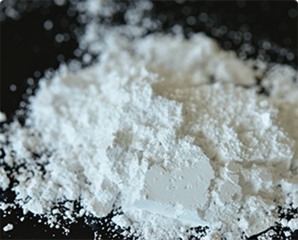Feb . 17, 2025 15:28
Back to list
Calcined Mica F-60
Calcined mica, a versatile mineral known for its excellent properties, has steadily become a key player in various industrial applications. Its transformation, through the calcination process, enhances its natural features, offering improved durability, thermal resistance, and insulation properties. This post aims to explore the innovative uses of calcined mica, highlighting its application across different sectors, and providing insights into why its demand is ever-increasing.
The rubber industry has also tapped into the benefits of calcined mica. Used as a filler, it bolsters flexibility and tensile strength, vital criteria for rubber products in varying applications. From tires to seals, the incorporation of calcined mica assures longevity and resistance to wear and tear. The consistent feedback from industry leaders underscores its value as an irreplaceable component in ensuring product reliability and safety. Additionally, calcined mica finds significant use in the realm of cosmetics. Its lustrous quality makes it a favored ingredient in products like eyeshadows and face powders, imparting a natural shimmer without harming skin health. As corroborated by dermatologists, calcined mica is non-irritating and safe for cosmetic use, making it a trusted choice for a natural glow and long-lasting coverage. Its eco-friendly nature also aligns well with the increasing consumer demand for sustainable beauty products. In the electrical industry, the high dielectric strength of calcined mica makes it an ideal insulator. Its ability to maintain stability at elevated temperatures is crucial in the production of capacitors and other electrical components. Reliable insights from electrical engineers emphasize its role in enhancing the safety and efficiency of electrical systems, ensuring optimal performance in varied environments. In summary, calcined mica’s diverse applications underline its significance across multiple industries. Its capacity to enhance product quality, durability, and sustainability positions it as an indispensable resource. Trusted by experts and well-documented across sectors, calcined mica stands out as a mineral of choice for those looking to innovate and enhance their product offerings. The continued research and development into its uses only promise to expand its application further, making it a compelling topic for continued exploration and investment within the industrial landscape.


The rubber industry has also tapped into the benefits of calcined mica. Used as a filler, it bolsters flexibility and tensile strength, vital criteria for rubber products in varying applications. From tires to seals, the incorporation of calcined mica assures longevity and resistance to wear and tear. The consistent feedback from industry leaders underscores its value as an irreplaceable component in ensuring product reliability and safety. Additionally, calcined mica finds significant use in the realm of cosmetics. Its lustrous quality makes it a favored ingredient in products like eyeshadows and face powders, imparting a natural shimmer without harming skin health. As corroborated by dermatologists, calcined mica is non-irritating and safe for cosmetic use, making it a trusted choice for a natural glow and long-lasting coverage. Its eco-friendly nature also aligns well with the increasing consumer demand for sustainable beauty products. In the electrical industry, the high dielectric strength of calcined mica makes it an ideal insulator. Its ability to maintain stability at elevated temperatures is crucial in the production of capacitors and other electrical components. Reliable insights from electrical engineers emphasize its role in enhancing the safety and efficiency of electrical systems, ensuring optimal performance in varied environments. In summary, calcined mica’s diverse applications underline its significance across multiple industries. Its capacity to enhance product quality, durability, and sustainability positions it as an indispensable resource. Trusted by experts and well-documented across sectors, calcined mica stands out as a mineral of choice for those looking to innovate and enhance their product offerings. The continued research and development into its uses only promise to expand its application further, making it a compelling topic for continued exploration and investment within the industrial landscape.
Next:
Latest news
-
Paint with Mica and Heat Reflective PropertiesNewsApr.16,2025
-
Enhancing Interior Walls with Thermal Paint and Mica PigmentNewsApr.16,2025
-
Mica Powder Paint: The Perfect Solution for Waterproofing and DurabilityNewsApr.16,2025
-
Mica Powder for Paint: A Unique Aesthetic and Protective SolutionNewsApr.16,2025
-
Mica Paint Powder: Enhancing Automotive and Industrial CoatingsNewsApr.16,2025
-
Allure of Mica Pigment Paint: Unlocking Shimmer and Color RangeNewsApr.16,2025
Products categories








